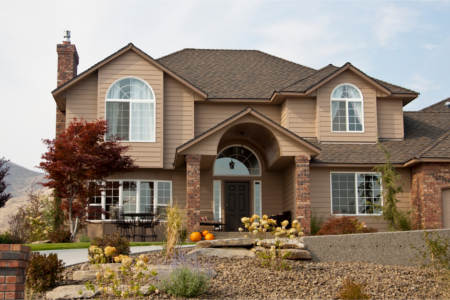
As we turn that corner into “full-on Fall”, it’s a good time to give your roof some attention. Generally, the source of a roofing system’s trouble can pinned down to five areas. Some of these problem areas require professional attention, but it all starts with your vigilance to ensure their overall health! Remember, anytime you are uncomfortable safely accessing your roof or feel that what you find exceeds your set of skills, don’t hesitate to call in the pro’s.
Shingles
Missing or broken shingles are a no-brainer. But shingles that are discolored, curling, buckling or pinged with few granules are also a warning sign! Neglect can leave underlying wood susceptible to rotting, holes and other damage.
Check your roof often and make replace shingles as necessary.
Fascia
Fascia is the band situated vertically under the roof edge and running horizontally across your home. Think of it as the roof trim. It is usually made of sheet metal or wooden.
Fascia acts as the protective layer between the edge of the roof and outdoor elements, particularly water. Because it blocks weather from entering the structure, it also shields the interior of your building. Moisture is the number one cause of problems with your fascia so be sure to look for signs of damage such as rot. Contact a roofing contractor immediately if you notice an issue.
Soffit
Soffit comes from the Latin term for “to fix underneath” as well as the French word for “formed as a ceiling.” (You now have an interesting tidbit to tell the neighbor over the back fence!) The exposed surface beneath the overhanging section of a roof eave is called the soffit.
Soffit with vented holes providing air circulation is called vented soffit. The holes draw heat and moisture away from the house. Vented soffit also helps ventilate the attic, preventing moisture damage in the rafters and sheathing. Cracks, holes and rot in the vinyl soffit can encourage water damage along with a welcome mat for small animals and insects!
Gutters
The number one gutter problem is gunk. Leaves, twigs and standing water can cause gutters to be pulled down and away from the fascia. Clear the debris and check the hangers that secure the gutters. Weather can deteriorate the hangers, or they might be spaced out too far apart from one another. If your gutters have holes, you can easily fix them with gutter sealant. Larger holes may need a patch.
Gutters should be aimed toward downspouts to keep them flowing properly. The rule of thumb is a minimum of a quarter inch slope for every 10 feet. If you find that standing water is a problem, your gutters do not have enough pitch. Extend downspouts four to five feet from the house to avoid puddling at your foundation. Gutter extensions are inexpensive, but save your home costly problems in the long run.
Flashings
These are the aluminum or galvanized steel protectors used to seal roof system edges, penetrations or perimeters. Their purpose is to seal any differences in the roof’s plane, particularly where water may enter. Check them for leaks, oxidation or any other deterioration.

